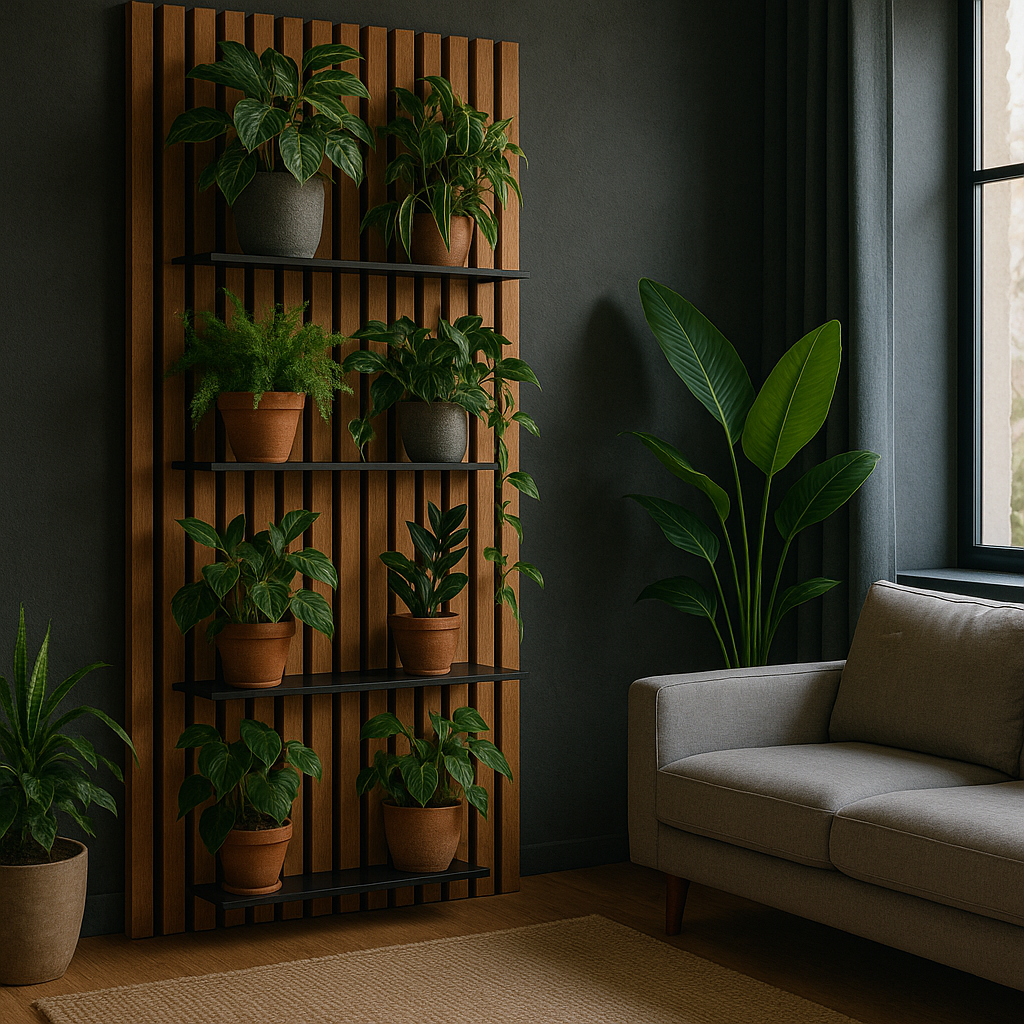Living in an apartment often means limited space, but that doesn’t mean you have to give up on your gardening dreams. In fact, vertical gardening is one of the most efficient and stylish ways to bring lush greenery into a small home without sacrificing valuable floor space.
This guide will walk you through how to start your own vertical garden indoors, the best plants to choose, tools you’ll need, and creative design ideas that fit perfectly into apartment living.
Why Vertical Gardening Is Ideal for Apartments
Vertical gardening is all about growing plants upward instead of outward. Whether using a wall-mounted system, hanging planters, or shelving units, vertical gardens are compact, space-saving, and highly customizable.
Here’s why vertical gardening works so well in apartments:
- Space-efficient: Perfect for small rooms, balconies, or even kitchens.
- Visually appealing: Acts as living art, adding beauty and texture to walls.
- Improves air quality: Maximizes the number of air-purifying plants without clutter.
- Flexible and modular: You can rearrange or expand your setup easily.
- Reduces clutter: Keeps plants off the floor and out of high-traffic areas.
Choosing the Right Spot in Your Apartment
Before diving into setup, it’s essential to find the right location for your vertical garden. Consider these factors:
1. Light Availability
Most houseplants require moderate to bright indirect light. Choose a south- or east-facing wall or a spot near a window where your plants will get consistent daylight. If natural light is limited, you can install LED grow lights above or alongside the setup.
2. Air Circulation
Avoid placing your vertical garden too close to radiators, AC units, or in poorly ventilated corners. Plants need good air flow to stay healthy and avoid fungal issues.
3. Moisture Considerations
If you’re using a watering system or plants that need regular moisture, place your vertical garden away from electronics or materials that could be damaged by water. Use drip trays, plastic liners, or waterproof backings to protect your wall or floor.
Types of Vertical Garden Structures
You don’t need a fancy system to start vertical gardening. Here are some simple yet effective methods that are apartment-friendly:
A. Wall-Mounted Planters
These are modular containers or pockets that attach directly to a wall. Popular materials include felt, plastic, or recycled wood. They’re great for herbs, succulents, or ferns.
B. Hanging Planters
Use ceiling hooks or wall brackets to hang pots at various heights. This style adds visual interest and works well in corners, kitchens, or near windows.
C. Ladder Shelves
A ladder-style shelf unit gives you multiple levels of planting space without any wall installation. Ideal for renters or anyone who wants a non-permanent solution.
D. Pegboards and Grid Systems
Mount a pegboard or metal grid on your wall and hang pots, baskets, or jars with hooks. It’s flexible and easy to rearrange.
E. Bookshelves and Floating Shelves
Don’t overlook your existing furniture. Bookshelves or floating wall shelves can double as mini vertical gardens when decorated with small planters and trailing plants.
Best Plants for Vertical Gardens in Apartments
Not all plants are suited for vertical gardens, especially indoors. Choose varieties that are:
- Compact or trailing
- Low-maintenance
- Adaptable to containers
- Tolerant of indoor light levels
Some great choices include:
- English Ivy: A beautiful trailing plant that adapts well to vertical growth.
- Golden Pothos: Hardy and visually appealing, perfect for beginners.
- Boston Fern: Adds volume and loves humid spots like bathrooms.
- Spider Plant: Great for hanging or shelf placement.
- Herbs: Basil, thyme, mint, and oregano thrive in vertical wall systems.
- Succulents: For a dry setup, choose low-water needs varieties like echeveria or string of pearls.
Setting Up Your Vertical Garden Step-by-Step
Ready to go green on the wall? Here’s a step-by-step overview to get started:
- Choose your location: Pick a space with the right light and air circulation.
- Decide your structure: Wall planter, ladder shelf, pegboard—pick what works best for your space and budget.
- Select your plants: Choose varieties that match your environment and care level.
- Prepare your planters: Ensure proper drainage by adding small stones or perlite to the bottom of containers.
- Install your system: Secure structures safely, especially when mounting to drywall. Use anchors if necessary.
- Water smart: Use a spray bottle or watering can with a long spout to avoid mess. Water from the top down, letting excess drip into lower levels.
- Monitor regularly: Check for yellowing leaves, pests, or overwatering. Rotate plants occasionally for even growth.
Design Tips for a Beautiful Vertical Garden
Your vertical garden can be more than functional—it can be a design centerpiece.
- Play with levels: Mix hanging and mounted plants for depth.
- Use decorative pots: Choose containers that match your décor style.
- Add lights: String lights or focused spotlights can highlight your plant wall.
- Combine textures: Mix leafy, trailing, and structured plants for variety.
- Use symmetry or asymmetry: Depending on your design taste, arrange plants in balanced or dynamic ways.
Maintenance Tips for Long-Term Success
- Prune regularly: Keep plants looking tidy and encourage growth.
- Clean leaves: Dust off leaves to help with photosynthesis.
- Check for pests: Look under leaves and near soil for early signs.
- Feed occasionally: Use diluted liquid fertilizer every few weeks.
- Re-pot as needed: If roots outgrow containers, move to slightly bigger pots.
Make the Most of Your Walls
With a little creativity and planning, your apartment walls can become lush green canvases. Vertical gardening brings nature indoors without the clutter, helping you enjoy the mental and physical benefits of plants in even the smallest spaces.
Whether you’re growing herbs for your kitchen or creating a relaxing green retreat in your living room, vertical gardening turns limited space into endless possibilities.
